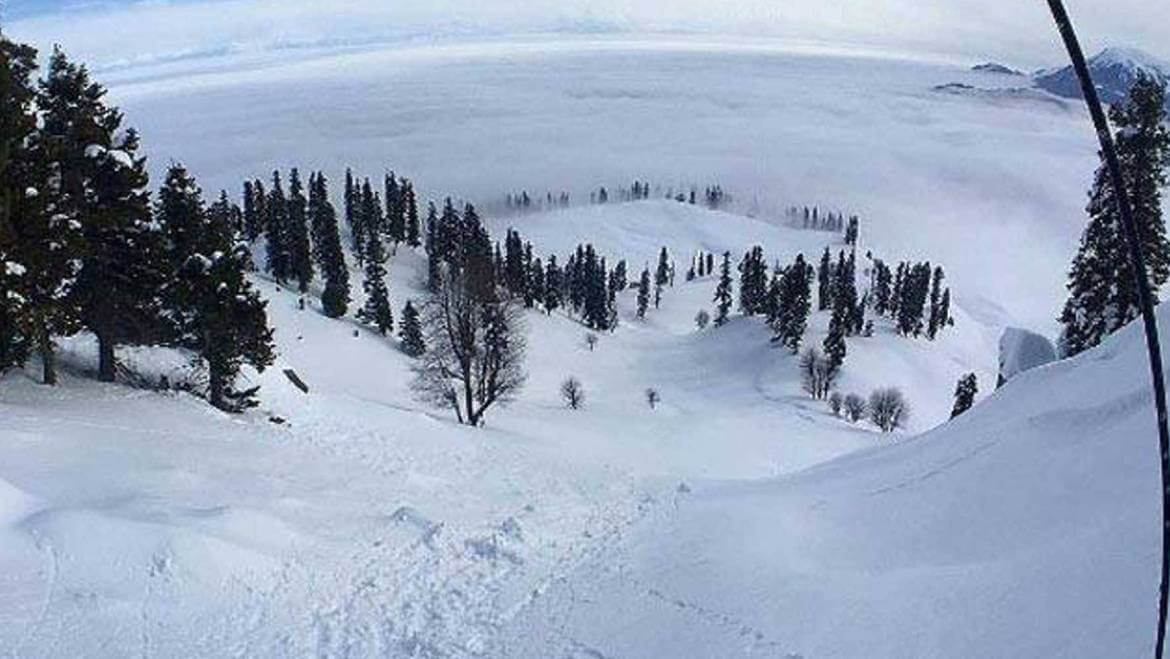The heart of Kashmir’s winter lies in Chillaikalaan, showcasing striking contrasts between snowy serenity and the unforgiving cold’s impact on daily life
By Mool Raj
As the winter season steadily advances, poised to weave its enchanting spell over the idyllic valley of Kashmir, a remarkable metamorphosis is on the brink of unfolding. The entirety of the landscape, with its myriad dimensions and manifestations, is poised to undergo a profound transformation. The regal mountain peaks, adorned in their pristine, snow-draped splendor, will emanate an unrivaled resplendence, captivating the beholder’s gaze. Yet, within this breathtaking beauty lies a chilling tale, as the valley is enveloped in an unrelenting and biting cold, almost as if nature itself conspired to subject its inhabitants to a rigorous test of endurance.
In the heart of this wintry wonderland, the chillaikalaan, a span notorious for its severe and bone-chilling cold lasting for an enduring forty days, takes center stage. During this temporal passage, the falling snow undergoes a dramatic transformation, freezing and transmuting the landscape into a glistening tapestry of ice and snow. Initially, the advent of snow imparts euphoria and delight to the denizens of Kashmir, bestowing upon them the gift of beauty and serenity in their surroundings.
Nevertheless, as the chillaikalaan establishes its grip, life within this captivating valley metamorphoses into an arduous and almost unbearable odyssey for its inhabitants. The freezing temperatures cast a challenging pall over daily activities, rendering roads icy and water sources frozen. The biting cold infiltrates homes, necessitating a constant struggle to maintain warmth through heating and insulation. Agriculture and livestock, too, bear the brunt of the chillaikalaan, with crops grappling to thrive and animals requiring heightened care and protection.
Survival becomes an art in itself for the people of Kashmir, who must adapt using age-old methods—layered clothing, reliance on firewood for heating, and judicious conservation of resources. Despite the adversities, the chillaikalaan dons a certain beauty, transforming the landscape into a winter wonderland. The glistening ice and snow bestow upon the scenery a mesmerizing allure, captivating both locals and visitors alike. Yet, the chillaikalaan remains an unyielding trial, probing the resilience and endurance of the people as they navigate through the freezing cold days and nights.
The repercussions of this prolonged period of extreme cold extend far beyond the realm of mere discomfort. The purchasing power of the populace, a vital facet of their daily existence, experiences a substantial decline as market conditions endure a severe blow. Economic activities, once thriving in the valley, now dwindle, leaving in their wake a desolate and somber atmosphere.
What were once vibrant streets, adorned with lively markets and pulsating with the energy of commerce, now wear a deserted and forlorn countenance. The dearth of tourists, save for a meager trickle to the renowned destination of Gulmarg, further compounds the economic downturn as the tourism industry grapples with the harsh realities of the chillaikalaan.

The frigid period in Kashmir exerts a profound impact that transcends the realm of mere economic inconvenience, affecting daily life in myriad ways. The biting cold infiltrates every nook and cranny, penetrating even the most fortified homes. The people of Kashmir find themselves in a constant battle against the elements, seeking warmth and solace within the confines of their houses. Venturing outside becomes a daunting task as the icy winds pierce through layers of clothing, leaving the body exposed to the relentless cold.
Once vibrant streets stand empty, as residents seek refuge from the biting chill, gathering together in the warmth of their homes. The frigid temperatures give rise to a palpable sense of isolation and confinement, compelling people to curtail their outdoor activities and endure extended indoor stays. The challenging weather conditions pose substantial hurdles to transportation, making it arduous for individuals to travel and adhere to their daily routines. The frigid period in Kashmir not only impacts the economy but disrupts the social fabric, compelling people to adapt and discover coping mechanisms for the extreme cold.
In the midst of the bitter cold of the chillaikalaan, the people of Kashmir persist in enduring and thriving. Across generations, they have cultivated an unyielding spirit, enabling them to confront and surmount innumerable challenges. Their unwavering determination manifests in the warmth emanating from their hearts, even on the darkest of days. Despite the harsh conditions, they find solace in the robust bonds of community.
Neighbors unite, sharing the burden of the cold and offering support and companionship to one another. This sense of unity and togetherness provides them with the strength to persevere. The people of Kashmir have honed the ability to draw strength from their collective resilience, finding comfort in the knowledge that they are not alone in their struggles. It is through their indomitable spirit and the support of their community that they navigate the challenges posed by the chillaikalaan.
The advent of winter in Kashmir bequeaths both beauty and hardship. The snow-capped peaks showcase nature’s grandeur, while the chillaikalaan, the harshest 40-day period of winter, tests the endurance of the valley’s inhabitants. This frigid season exerts a profound economic and social impact on the region.
With the decline in purchasing power and the conspicuous absence of tourism, Kashmir confronts formidable challenges. Nevertheless, the people of Kashmir possess an unwavering spirit and a profound sense of community, which empowers them to traverse these difficulties. Despite the hardships, the people of Kashmir emerge from winter stronger and more resilient.
The views expressed in this article are solely those of the author and do not necessarily reflect the opinions or views of this newspaper


Comments are closed.